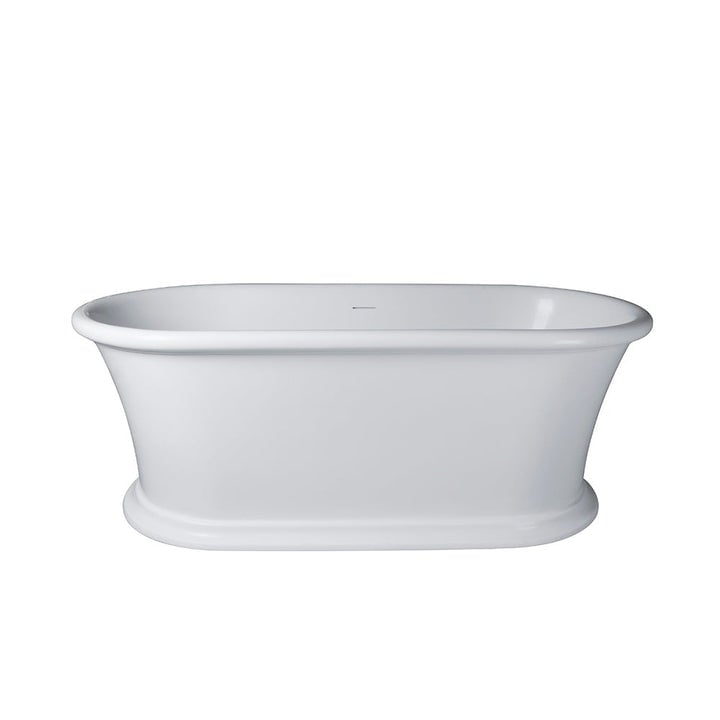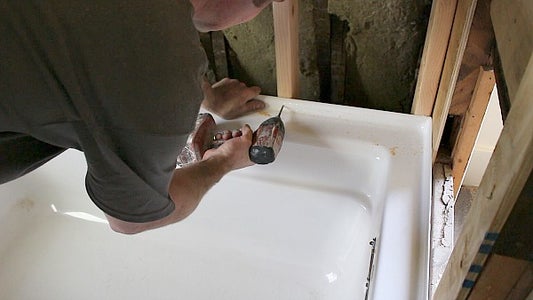Your Plumbing Crash Course: What You Must Have for Bathtub Installation
Your Plumbing Crash Course: What You Must Have for Bathtub Installation
Blog Article
Are you currently looking for content around A Step-by-Step Guide to Installing a Bathtub?

Mounting a bathtub isn't precisely brain surgery, yet it does call for solid plumbing, carpentry, as well as often, tiling abilities. Changing an old bath tub with a new one is likewise a reasonably hard task. If the old bathtub is conveniently accessible, the project can relocate quickly; if you have to open a wall surface to remove the old bathtub and position the brand-new tub, the task is much harder. In either instance, the job is within a home handyman's abilities, although you will require an assistant to move out the old bathtub as well as set in the brand-new one. Make sure you have actually qualified on your own for the job as well as fit attempting it. As opposed to employing a professional to take control of a halfway-completed project, it is much better to consider utilizing one before you start. Chances are you may require a specialist plumber to make tube connections.
This short article will certainly aid you install a new bathtub in your restroom if you have actually currently acquired a new bathtub and don't require to change the plan of your previous supply of water pipelines.
Your devices and material list need to comprise the following:
Removing Old Taps
If you need to replace old taps with new ones as a part of your installation, then the first thing you need to do is separate the water. After doing so, turn on the faucets to drain any water staying in the system. The procedure of eliminating the existing faucets can be fairly bothersome as a result of the limited gain access to that is usually the situation.
Utilize a basin wrench (crowsfoot spanner) or a faucet device to undo the nut that connects the supply pipelines to the taps. Have a cloth all set for the staying water that will originate from the pipes. As soon as the supply pipelines have been removed, make use of the same device to loosen the nut that holds the faucets onto the bath/basin. You will require to stop the solitary taps from transforming during this procedure. Once the taps have actually been removed, the holes in the bath/basin will certainly have to be cleaned up of any kind of old securing substance.
Before carrying on to fit the new taps, contrast the pipeline connections on the old taps to the new taps. If the old taps are longer than the new faucets, after that a shank adapter is required for the new taps to fit.
Suitable New Touches
If the tails of the brand-new taps are plastic, then you will certainly require a plastic adapter to stop damages to the thread. One end of the connector fits on the plastic tail of the tap and the other end offers a connection to the existent supply pipes.
If you need to fit a monobloc, after that you will certainly require minimizing couplers, which attaches the 10mm pipe of the monobloc to the typical 15mm supply pipe.
Next, position the tap in the mounting hole in the bath/basin ensuring that the washers are in place between the tap and also the sink. Safeguard the faucet in position with the supplier provided backnut. When the faucet is safely in place, the supply pipes can be connected to the tails of the faucets. The faucets can either be linked by using corrugated copper piping or with normal faucet ports. The former kind needs to be linked to the tap finishes initially, tightening just by hand. The supply pipes can later on be linked to the other end. Tighten up both ends with a spanner after both ends have been attached.
Setting up the Bathtub
Making use of the two wood boards under its feet, position the tub in the called for setting. The wood boards are practical in uniformly spreading out the weight of the bathtub over the area of the boards rather than concentrating all the weight onto four little factors.
The following goal is to guarantee that the tub is leveled all round. This can be accomplished by examining the level and also adjusting the feet on the bathtub until the spirit level reads level.
To install taps, fit the bottom of the furthest flexible tap adapter to the proper supply pipe by making a compression sign up with; then do the same for the various other tap.
Activate the water as well as examine all joints and also brand-new pipework for leaks and tighten them if required. Fill up the tub and likewise examine the overflow electrical outlet and also the normal electrical outlet for leakages.
Finally, fix the bath paneling as described in the supplier's user's manual. Tiling and also sealing around the tub must wait up until the bath tub has actually been used a minimum of when as this will settle it into its last setting.
Planning for the Installation
First of all, the sustaining structure provided with the bath must be fitted (if called for) according to the producer's guidelines. Next off, fit the taps or mixer to the bath tub. When fitting the faucet block, it is essential to see to it that if the tap includes a plastic washer, it is fitted in between the bath as well as the faucets. On a plastic bathroom, it is also practical to fit a sustaining plate under the taps device to avoid stress on the bathtub.
Fit the flexible faucet adapters to the bottom of the two faucets using 2 nuts and olives (often provided with the bathtub). Fit the plug-hole electrical outlet by smearing mastic filler round the sink electrical outlet hole, and then pass the electrical outlet via the hole in the bathroom. Use the nut provided by the supplier to fit the plug-hole. Take a look at the plug-hole outlet for an inlet on the side for the overflow pipeline.
Next off, fit the end of the versatile overflow pipe to the overflow electrical outlet. After that, screw the pipeline to the overflow face which ought to be fitted inside the bathroom. See to it you utilize every one of the supplied washing machines.
Connect the trap to the bottom of the waste electrical outlet on the bathtub by winding the thread of the waste outlet with silicone mastic or PTFE tape, and also screw on the catch to the outlet. Link all-time low of the overflow tube in a similar manner.The bath ought to currently prepare to be suited its last placement.
Tiling Around the Bath tub
In the area where the bath meets the floor tile, it is necessary to seal the accompanies a silicone rubber caulking. This is essential as the fitting can relocate enough to break an inflexible seal, creating the water to penetrate the wall between the bath as well as the tiling, causing difficulties with wetness as well as possible leaks to the ceiling below.
You can select from a range of coloured sealants to blend in your fixtures and fittings. They are marketed in tubes and cartridges, and are capable of securing voids as much as a width of 3mm (1/8 inch). If you have a larger gap to fill up, you can load it with spins of drenched newspaper or soft rope. Remember to always fill the tub with water prior to securing, to permit the motion experienced when the bathtub is in use. The sealer can split rather early if you do not take into account this motion before securing.
Conversely, ceramic coving or quadrant tiles can be utilized to border the bathroom or shower tray. Plastic strips of coving, which are easy to use and cut to size, are likewise quickly offered on the marketplace. It is suggested to fit the floor tiles using water-resistant or waterproof adhesive and grout.
Bathtub Installation
How Important Is A Bathtub To Your Home?
High-quality baths, showers, and other bathroom updates are necessary when considering a smart investment in your home. It’s a room that you go to every day and one that is constantly being used by guests.The bathroom is one of the top trafficked rooms in a home and also one of the most valuable in terms of home resale.
Install Piping Before Tub
You will be using your existing drain and waste vent system, but pipes required include the hot and cold water supply lines and a pipe leading to a shower head. A mixing valve and shower head are also needed. Air chambers may be required.
Position the Tub
Lower the tub into place so that the continuous flange fits against the wall studs and rests on 1’x4' or 2’x4' supports. Anchor the tub to the enclosure with nails or screws inserted through the flanges into the studs.
NOTE: Remember, bathtubs and shower stalls may require support framing. A bathtub filled with water is extremely heavy, so check building codes and framing support before installing the tub.
Assemble Drain Connections
Assemble the bathtub drain connections by connecting the tub overflow with the tub drain above the trap, not beyond it. The trap will have a compression fitting that screws over the arm of the overflow assembly.
Place a Pipe For the Shower Head
First, locate a brass female threaded winged fitting and attach it to a framing support via a screw or a nail. Then run a pipe up the wall for the shower head. Sweat or solder the other side of the brass fitting to the top of the pipe.
Attaching Hot and Cold Water Lines
Attach your water lines for both hot and cold by sweating these directly into the hot and cold ports of the mixing valve. The mixing valve will be how water enters the tub’s system, not by the pipes themselves.
Install the Spout
Extend a piece of 1/2 inch pipe, or whichever length is specified in the manufacturer’s instructions, for the tub spout. Sweat on a male threaded fitting at the end of the pipe or use a brass nipple of the proper length and a 1/2 inch cap.
NOTE: At this point you should have your rough-in plumbing work inspected before proceeding further.
Check For Leaks
Restore the water pressure and check the drain connection and the supply pipes for any sign of leaking.
estore the Bathroom Wall
Replace the wall with moisture-resistant drywall as a base for your wall covering. Seal the joints between the wall and your new tub with silicone caulk as protection against water seepage.
https://www.berkeys.com/2016/12/02/bathtub-installation-dallas/

I came across that piece about A Step-by-Step Guide to Installing a Bathtub when doing a lookup on the search engines. Do you know about somebody who is excited by the niche? Be sure promote it. Thank-you for your time spent reading it.
Best in town? Dial. Report this page